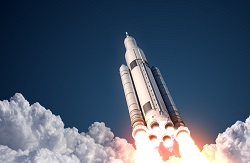When space launchers come clean
The upper stages of space launchers are typically loaded with sensors that could theoretically tell engineers everything they need to know about the launcher’s status and possible vulnerabilities. Yet, limited on-board computing capabilities and bandwidth to ground have so far made it impossible to acquire most of this data. This is the context in which the MaMMoTH-Up (Massively extended Modular Monitoring for Upper Stages) project came to life. In 42 months, the project consortium set for itself the objective of increasing the amount of monitored data by a factor of over 2 500. Jan-Gerd Mess, coordinator of the project on behalf of the German Aerospace Centre, discusses the project’s achievements ahead of its completion in August 2018. Why is it important to gather more data from the upper stages of launch vehicles? One of our main objectives is to provide more insights into the launcher’s environment. This is important for better understanding the conditions it is subjected to, but most importantly the resulting mechanical stress that the whole system has to cope with. The acquired data comes from thermal, pressure, vibration, shock and acceleration sensors as well as strain gauges. It will help optimise the system itself and also enable future developments in terms of stability, weight reduction and safety. This is especially important for newly introduced materials such as carbon fibre, as we can only exploit their full potential if we fully understand their behaviour under operational conditions. What makes gathering this data so difficult to achieve? The existing launcher hardware and its telemetry chain, although well-proven and reliable, are limited in their performance in terms of computational power and bandwidth. Updates to either of these are very expensive as they involve costly and protracted requalification of the entire launcher, as well as substantial investments in ground infrastructure. How do you suggest overcoming this problem and what would you say makes your approach particularly innovative? Our approach is to introduce a modular system that can easily be adapted and extended to comply with specific mission requirements. It is minimally invasive, and at the same time minimises risks for the nominal mission of the launcher. By using commercial-off-the-shelf (COTS) components in a protected environment, the computational power of the on-board hardware can be increased significantly. This allows us to introduce intelligent data selection and compression algorithms that optimise the amount of useful information for the existing telemetry link. By further introducing widely-used serial interfaces like RS422 and CAN-bus, we also ensure that future developments and modules (cameras, wireless sensors, etc.) can make use of the developed system. Did the demonstrator live up to your initial expectations? To this point, the demonstrator has survived the necessary qualification testing to be applicable for use on an ARIANE 5 launcher in terms of thermal-vacuum, rapid depressurisation and EMC. Vibration testing is still pending, but the tests will be conducted over the next months, before the end of the project. From a functional point of view, the whole system has been assembled, and mission simulations based on ARIANE 5 flight profiles have successfully been conducted. Whilst data selection is still an ongoing topic in both research and implementation, data compression as well as all mechanisms for sensor data allocation and transmission are in place and have successfully been tested. How far do you think you’ll be able to go? Have you made it to the demo flight stage yet? A qualification model is now readily integrated and is undergoing representative qualification testing like an actual piece of flight hardware. We are, therefore, confident that we can reach TRL 5/6 by the end of the project. What are your plans for commercialisation, and what would you say will be your main selling points against potential competitors? To the best of our knowledge, there is currently no other system that can both modularly increase the launcher’s capabilities in terms of data acquisition while also introducing an extendable platform for testing new technologies in a safe environment during flight. This creates a completely new use case for the launcher. What are your follow-up plans, if any? We are planning to apply for further Horizon 2020 and ESA funding within the framework of an in-orbit verification and demonstration, so as to prove the applicability of our approach. Additionally, an adaption to ARIANE 6 might be feasible, which would include not only a future flight but also the application of the MaMMoTH-Up system during ground-based system and subsystem tests. This would increase the data acquisition capabilities of the qualification facilities.
Countries
Germany



